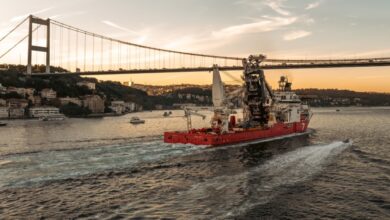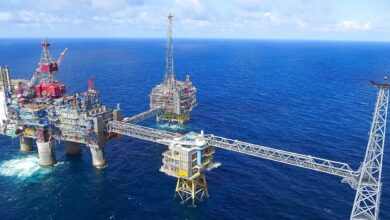Shell developing new techniques for EOR in challenging fields
By Katie Mazerov, contributing editor
While increased demand for oil is pushing the industry to find new sources, existing reservoirs contain significant hydrocarbons that are being recovered with emerging technologies. “Existing reservoirs typically yield only 30% to 35% of their potential,” Dick Benschop, president, Shell Netherlands, said. He and other Shell executives hosted a live webchat, “Using Innovation to Help Meet the Energy Demand: Solutions to Extract More from Existing Fields,” on 5 October. “At Shell, we have developed enhanced oil recovery (EOR) techniques to extract up to 20% additional yield from light oilfields and 80% for heavy oil,” Mr Benschop said.
Although EOR technologies traditionally have been used in the late stages of oilfield recovery, newer fields sometimes need EOR to achieve initial production targets. “These are typically heavy-oil assets that until recently would have been considered unrecoverable, particularly if there were ample ‘easy oil’ opportunities,” said Didrik Reymert, vice president, Shell Upstream Projects, EMEA. “But the change in oil prices and recent advances in technology have changed this picture.”
Shell has three families of enhanced oil recovery (EOR) technologies: thermal, miscible gas and chemical injection, the most widely used being thermal recovery using steam injection. “Chemical EOR is the least-used method, but we see a promising future with new, more efficient polymers for chemical EOR (polymer flooding),” said Hans Wenck, communication manager for innovation, research and development for Shell.
In cases where the oil is too viscous to flow easily, heat can be applied with steam to thin the oil and enable flow. Steam injection is being used to extract heavy oil in the Schoonebeek field in The Netherlands. Discovered in 1943, the field has yielded more than 250 million bbls of oil. Shell hopes to recover an additional 100 million bbls with EOR technology.
“In this field, ultrapure water is heated to generate steam that is injected into the oilfield to make the oil more liquid,” explained Michael Lander, project manager for the Schoonebeek Redevelopment Project. “The cogeneration plant produces steam and power, and an oil treatment installation separates the oil and water.” The field will eventually have 73 wells at 18 production locations.
Shell is also looking at integrating CO2 sequestration with EOR. “CO2 can work in certain types of oil reservoirs very advantageously, provided the pressure and temperature conditions match the requirements,” said Diederik Boersma, R&D team leader for Enhanced Oil Recovery. “Recovering quality CO2 from the atmosphere or from flue gas in a cost-effective and energy-efficient way is often difficult, but removing the nitrogen can often make it more attractive.”
Shell is looking at some offshore fields in the Middle East for possible deployment of the technique. “We are working further developing CO2 EOR based on our 15-year field experience in the Permian Basin CO2 project,” he said. Nitrogen may be preferred to CO2 for deep, high-pressure reservoirs with light, volatile oil.
In the offshore arena, challenges for EOR techniques include cost and environmental considerations. “EOR generally requires quite extensive facilities and complicated treatment of the oil, which is a lot more expensive to install offshore,” Mr Reymert said. “Also, EOR will increase water production, and offshore treatment and disposal of water is difficult. Offshore EOR will also generally result increased logistics and maintenance.”
Currently, the company is focused on developing deepwater heavy oilfields. For the Parque das Conchas ultra-deep heavy oilfield off the coast of Brazil, Shell installed powerful electric pumps on the seabed to push the oil to surface, nearly 1,800 meters above. “The oil would not have flowed to the surface by itself as it does in conventional offshore oilfields,” Mr Reymert said. The same technology has been applied in the Perdido projects in the Gulf of Mexico, in even deeper waters.
Shell has a portfolio of 11 EOR projects in development or operation, including The Netherlands, Russia, Oman and Brunei. “Our experience has been gained in projects in different geological, geographical and commercial settings, and challenges around the world,” Mr Wenck noted. “Going forward, we will apply EOR where it will generate value.”




